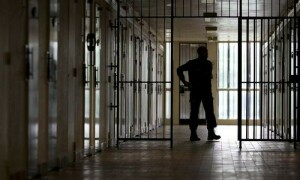
The Pakistani art scene boastfully records in its history a dramatic makeover in the field of miniature painting during the nineties. Neo-Miniature, now a globally acknowledged art movement, originated in Lahore when many young artists, primarily students from the prestigious National College of Art, spearheaded a shift in how they realised miniature paintings.
Miniature painting before this evolution was traditionally observed as a practice that archived histories and biographies. With this approach towards the subject, students fulfilled assignments that required them to copy and reproduce existing works from the past.
Over the years, enthused prodigies began to contest these pedagogical exercises around the discipline. These exercises not only stunted the subject’s progressive advancements, they claimed, but also obstructed its revival from the peripheries into the circle of mainstream genres; miniature painting was considered an archaic form of art.
Students brought in their concepts along with techniques that broke the established rules of aesthetics and understood norms in making miniature paintings, such as the scale of the work, inclusion of a frame, the foundation of a grid, or portrayal of subjects in two-dimensionality.
Two Neo-Miniature artists comment on the illusory and fragile nature of power of all kinds
Their intentions set a departure point from previously documenting and recreating, to now fabricating their narratives. The changing perspective undeniably encountered and overcame a lot of friction before eventually sustaining itself as a popular medium prized around the globe for its uniqueness. Artists retained the quintessential South Asian aesthetics despite combining them with influences of the Western visual lexicon.
A recently concluded exhibition at the Sanat Initiative titled ‘Making — Remaking’ demonstrated the furcating vocabularies in contemporary miniature praxis, propelled by the Neo Miniature movement. The exhibition comprises works by Asif Ahmed and Farhat Ali, both graduates from the NCA and formally trained in miniature painting.
The artists appropriate existing popular images, characters and old artworks from the Subcontinent and the West and present a metaphoric battleground, where the two languages encounter each other. They address the various consequences of colonisation that continually afflict humans and lands and identify its imprints on art education in Pakistan.
Several artists and students may agree that Western art history is given more recognition and visibility in academia than the severely under-researched local art history, of which many remain uninformed.
Asif Ahmed appropriates Mughal portraits alongside motifs of flowers and elephants, on which he superimposes minimal line drawings of various artillery and tools of violence, such as a mousetrap. The politically charged paintings speak vociferously on the pain and loss caused by the past and ongoing wars.
He deliberately stains the surfaces with ink blotches that bleed and diffuse with each other at their will, echoing the ruination of land. Ahmed also renders only the silhouettes of his subjects in some of his visuals. Imprints only identifiable from their contours become putrefying fossils that the artist excavates.
An ominous human skull in a crimson orb placed next to a historic portrait reinforces the connotations around death and decay over time. Line drawings and tracings become a vital technique for Ahmed. He intends to show remnants that are also half-truths his viewers can challenge. He uses a calculated grid to rearrange and align the same image in different permutations.
In some works, the image overlaps itself while, in other artworks, it becomes a distorted reflection — perhaps a symbolic manifestation of the other side of history that remains untold. Ahmed’s meticulously painted visuals remind us that history is seldom documented objectively and is almost always broadcast the loudest by those in power.
In his whimsical paintings, Farhat Ali illustrates venues where he stages rendezvous between two or more subjects from dichotomous realms. Historic Indo-Persian miniature paintings become the appropriated foundation of his visuals, in which he invites various characters predominantly originating from Europe and the further West.
The ‘guests’ range from figures in Classicism and Renaissance paintings, children’s cartoons, and contemporary animated movies. Behind the humour and absurdity lies the subtle political undertones of the power imbalances and hierarchies between current geographies.
Viewers cannot discern whether the indolent Homer Simpson or the impish Minion are guests or intruders into someone’s private space, echoing our archived colonial accounts. The inclusion of widely familiar TV and film cartoon characters makes a statement on how similarly we consume art the way we consume popular culture.
This exercise also allows Ali to comically poke fun at our understanding of high art and how we continue to place Western art, art history and contemporary visual culture on a higher pedestal instead of ours, something he became aware of since his student days in academia. The work bears his attempt at dismantling a Eurocentric mindset and negotiating with internalised Orientalism — common in our art sphere — which otherises local, indigenous aesthetics and vernacular art as something exotic.
Juxtaposition plays an indispensable role in both artists’ bodies of work. They gather local and Western aesthetics, colliding perspectives and warping time to show the real and unreal from what could be the past or the present.
In a climate currently more globalised than ever before, the artists use their skills to support a defiant and needed voice that comments on the illusory and fragile nature of power of all kinds, while also rejecting a colonial hangover and Eurocentric mindset, particularly in the field of art.
‘Making — Remaking’ was on display at the Sanat Initiative in Karachi from March 08, 2022, to March 17, 2022
Published in Dawn, EOS, April 3rd, 2022
















































Dear visitor, the comments section is undergoing an overhaul and will return soon.